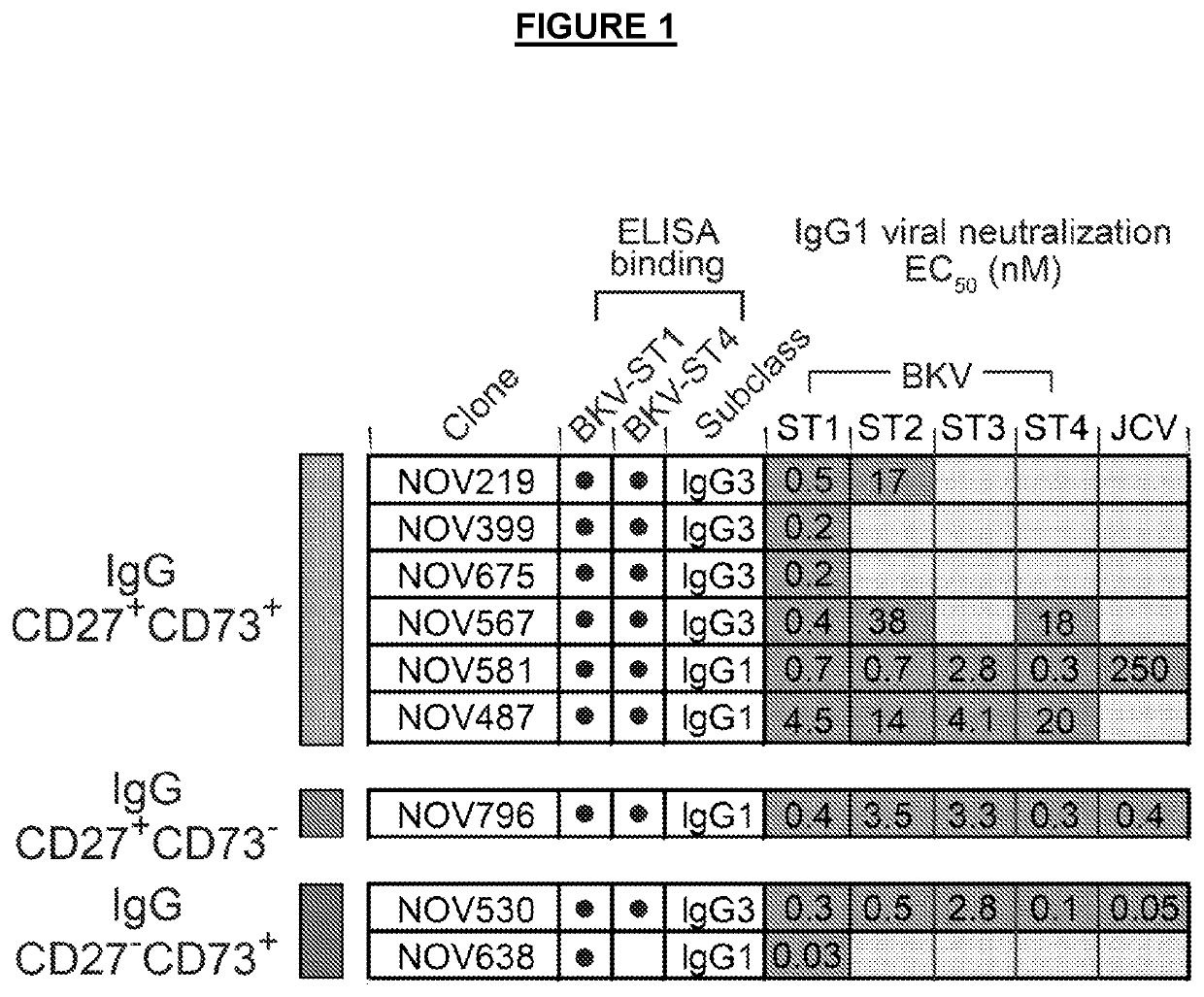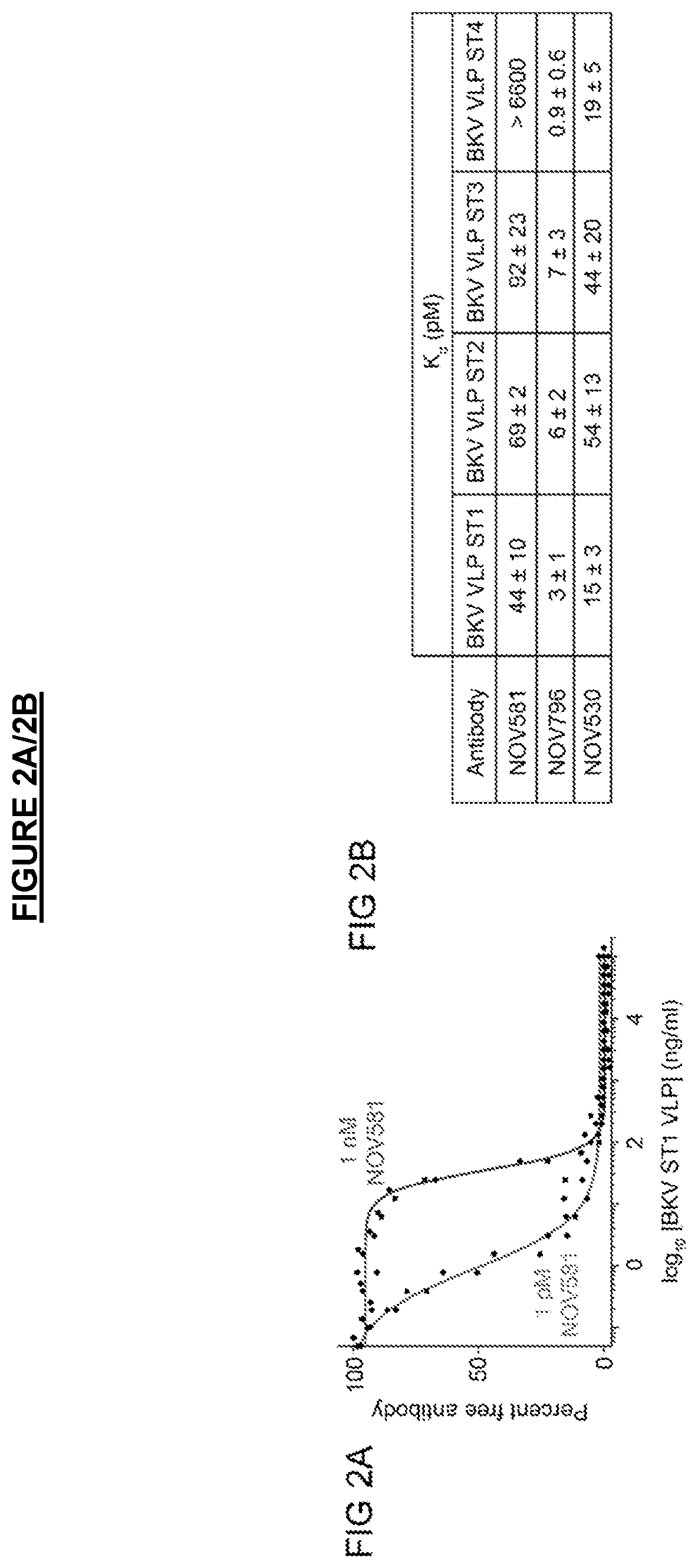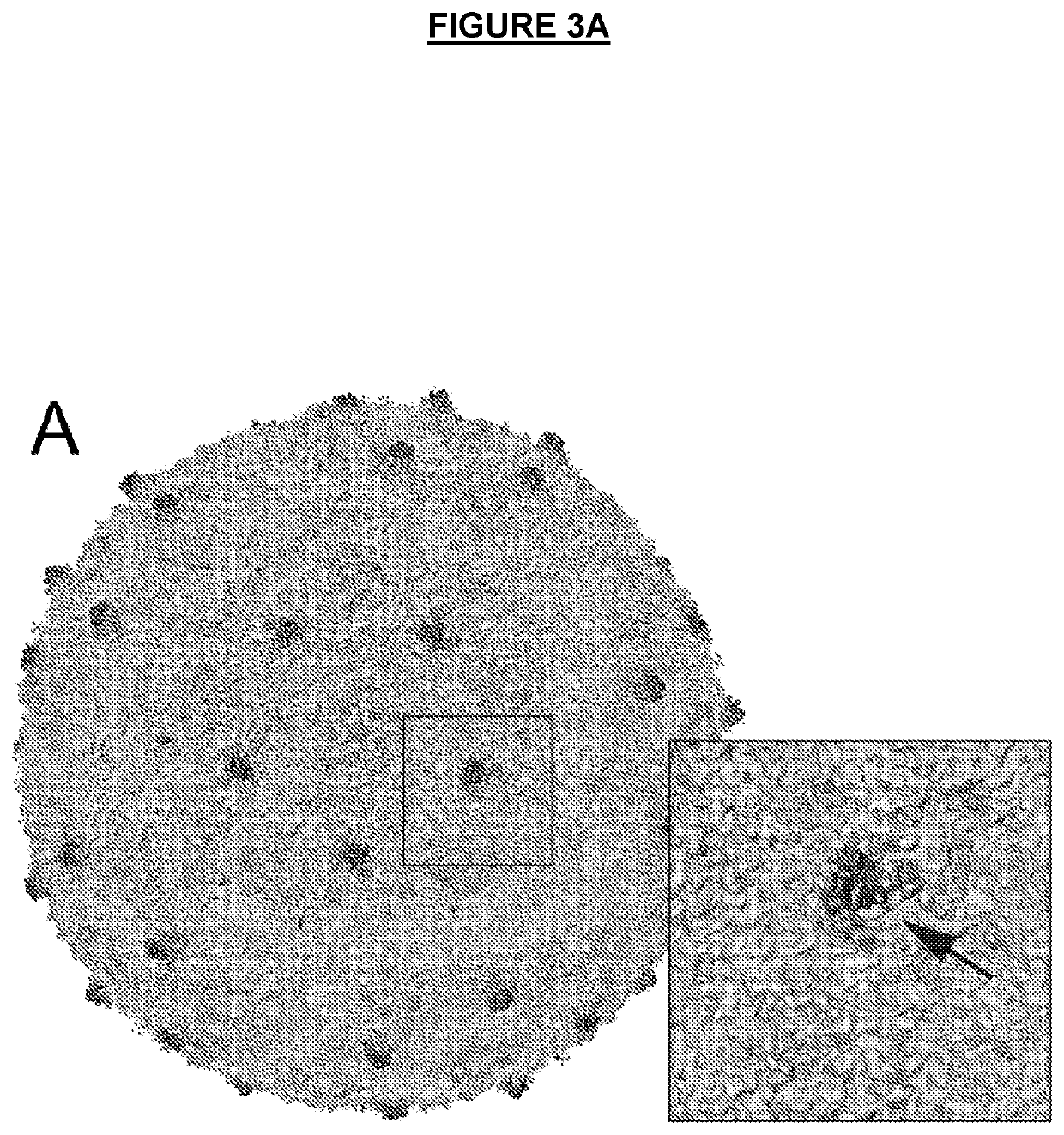Polyomavirus neutralizing antibodies
a technology of neutralizing antibodies and polyomaviruses, applied in the field of antipolyomavirus antibodies and antibody fragments, can solve the problems of increased risk of acute rejection, uncontrolled bkv replication, and bkv-associated nephropathy
- Summary
- Abstract
- Description
- Claims
- Application Information
AI Technical Summary
Benefits of technology
Problems solved by technology
Method used
Image
Examples
example 1
n of Anti-BK or JC Virus Antibodies
[0206]B cells expressing anti-BKV and / or anti-JCV antibodies were lysed and the VH (heavy) and VL (light) chains were amplified by RT-PCR and subsequently sequenced and analyzed to identify critical post translational modification (PTM) sites. Plasmids of the VH and VL chains were then transfected in a CHO mammalian cell line in an IgG1 backbone vector for expression of the full IgG1 antibodies.
example 2
f Anti-BKV Antibodies to VLPs (ELISA)
[0207]The binding of antibodies to VLPs were analyzed by ELISA. Briefly, Nunc MaxiSorp 384-well plates (Thermo Scientific) were coated with 100 ng / well BKV VLPs to BK serotype I (ST1) or serotype IV (ST4) overnight. Antibodies were serially diluted in PBS with 0.5% BSA and allowed to bind antigen-coated plates for 2 hours. Plates were washed with PBS and then incubated with secondary antibody (HRP-conjugated goat anti-human IgG, Southern Biotech #2040-01) diluted 1:6000 in 0.5% BSA in PBS for 1 hour. Plates were washed with PBS and tetramethylbenzidine (TMB) microwell peroxidase substrate (SeramunBlau Fast, Seramun, Germany) was used to develop the reactions. The results of ELISA binding can be seen in FIG. 1. For example, the antibody NOV530 bound to both BKV ST1 and BKV ST4. Antibody NOV638 bound only to BKV ST1.
example 3
ation of Viral Infection Anti-BKV Antibodies
[0208]Infectious BKV serotype I (ST1) and chimeric viruses representing serotype II (ST2), III (ST3), and IV (ST4) were pre-incubated with purified antibodies for 1 hour to allow for binding and neutralization. Primary renal proximal tubule epithelial (RPTE) cells (ATCC, cat #PCS-400-010) were then exposed to the virus-antibody mixture for 4 hours, replaced with fresh medium, and incubated for 48 hours to allow for viral entry and gene expression. Cells were fixed with 4% paraformaldehyde and analyzed by immunofluorescence to detect TAg expression (Calbiochem DP02, pAb416 mouse anti-SV40 TAg antibody). The immunofluorescence was analyzed by high content image analysis using the Cellomics ArrayScan® VTI HCS Reader to quantify the percent of BKV-infected cells (TAg-positive, DAP1-positive), with data presented as percent inhibition of infection relative to untreated control wells. Data are presented as EC50, the concentration of antibody at ...
PUM
| Property | Measurement | Unit |
|---|---|---|
| nucleic acid | aaaaa | aaaaa |
Abstract
Description
Claims
Application Information
 Login to View More
Login to View More - R&D
- Intellectual Property
- Life Sciences
- Materials
- Tech Scout
- Unparalleled Data Quality
- Higher Quality Content
- 60% Fewer Hallucinations
Browse by: Latest US Patents, China's latest patents, Technical Efficacy Thesaurus, Application Domain, Technology Topic, Popular Technical Reports.
© 2025 PatSnap. All rights reserved.Legal|Privacy policy|Modern Slavery Act Transparency Statement|Sitemap|About US| Contact US: help@patsnap.com



